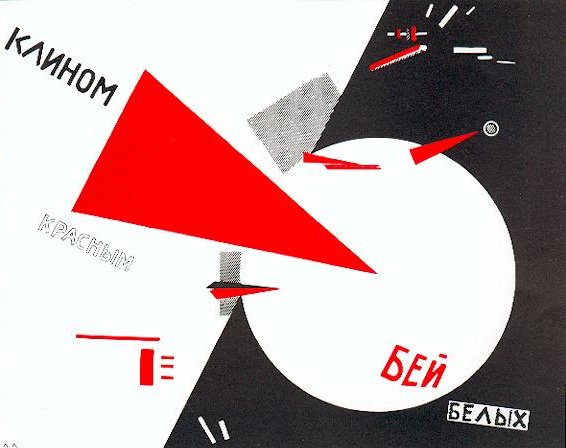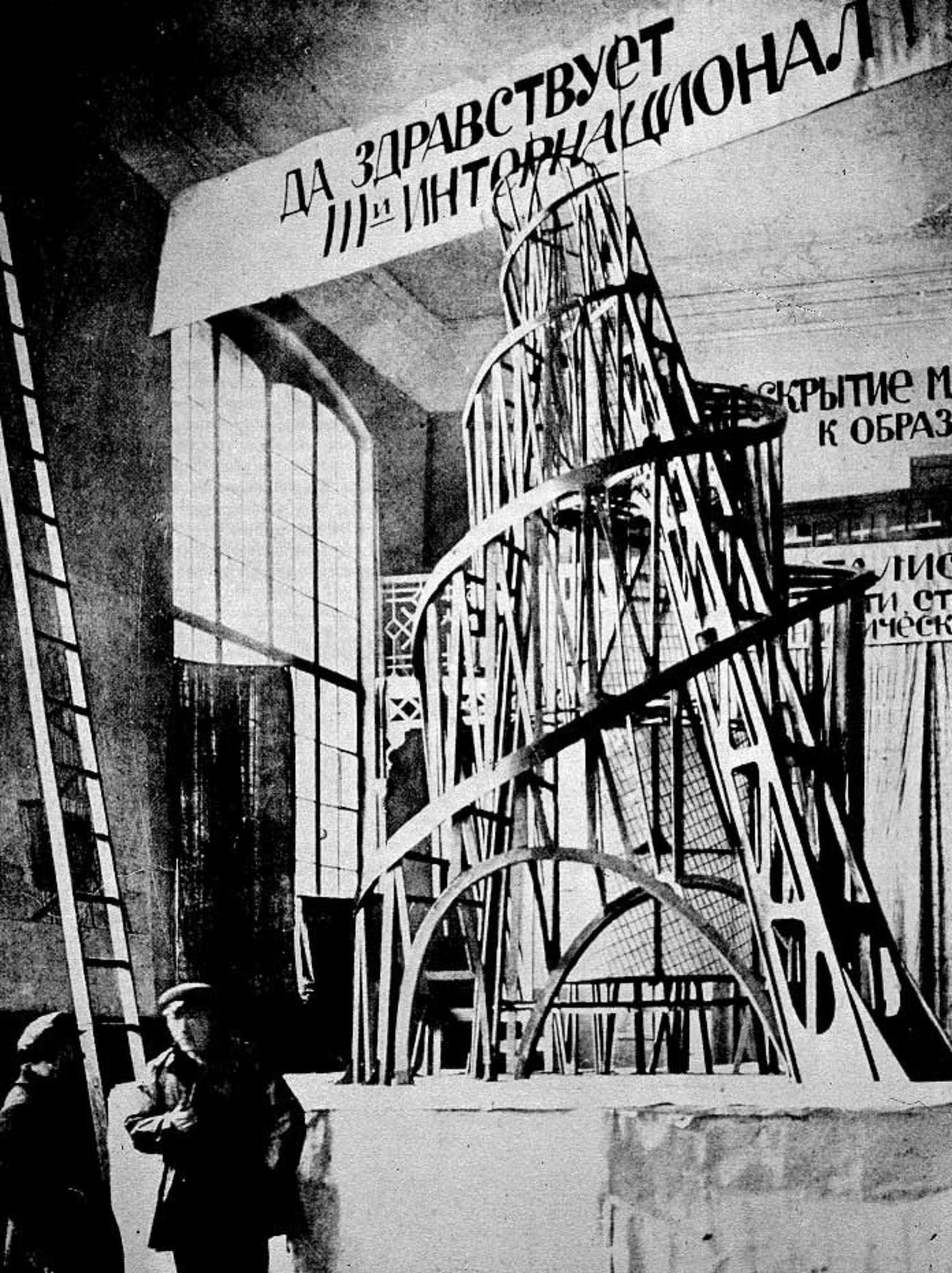Constructivism as the prevailing art movement of the time was a far cry from the lack of context in the abstraction of Malevich and Suprematism, it was a celebration of Bolshevik Russia under a new regime. One of the most important and representative of contemporary Russia is the graphic art Beat the Whites with the Red Wedge (1919) which represents the battle between the white monarchists and the Red Army or the Bolsheviks.
 |
| "Beat the Whites with the Red Wedge" by El Lissitzky, Lithograph, 1919. |
The lithograph above depicts the struggle between red and white during the Russian civil war, with a strict symbolic association between colour and context - it's an early example of a modern influence on graphic art and typography. But the colours and the bold text are reminiscent of future propaganda in Europe. It shows clear influence, however, from the use of solid colours and sharp shapes and angles founded in Suprematism, the Red Wedge representing the growing support for the Bolsheviks and the chipped away, defeated monarchists - Lissitzky used a visual language to express ideas and initiate a thought provoking influence.
Constructivism had a lasting impact on artistic practices and architecture; with artists working in sculpture, infrastructure and graphic art. This was art with a purpose - the idea of "pure" art was rejected in favour of the promotion of art for social purposes was important rather than the concept of "art for arts' sake." This was a characteristic of Russia's new socialist regime.
However, with a new government and national regime came difficulties regarding resources and socio-economic structure. This meant that as manufacturing and production in the country were degrading, the art world suffered and was altered by the lack of materials which in turn affected the work of many artists of the time. One of the many artists impacted by this problem was Vladimir Tatlin. Monument to The Third International designed in 1917 as a celebration for the future vision of Russia. This monument was designed at the time to be over 400 metres in height and tower over the city, the tallest building in history at this point. It's spiralling metal structure was an innovative design that is responsible for today's modern architecture influences. But, with the resource problems - the building was designed from iron, glass and steel, it was impossible to construct and for this reason, never built. Despite it's influences on artists such as Dan Flavin and Ai Weiwei, the vision for this monument never reached fruition and can be seen as a metaphor for the vision of Russia after the revolution of 1917.
 |
| "Monument to The Third International" by Vladimir Tatlin, 1917, 400 metres height. |
Despite the poor materials for manufacturing, other structures were used to build sculpture - particularly kinetic forms such as perspex, celluloid, nylon and bronze. However, many of these sculptures had to be reconstructed as they would become lost, damaged and degraded over time. An example of such as artist who would use these ambitious and limited materials is Naum Gabo who experiments with astronomical and innovative forms of kinetic sculpture, inventive in shape and it's sense of movement - it appears futuristic.
An example of one of these artworks by Naum Gabo (1890-1977) is Construction in Space with a Crystalline Centre constructed in 1940. This depicts somewhat how Gabo exhibited space and time as active components in sculpture, a revolutionary idea that incorporated engineering and science. The geometrics and motion-like quality make the sculpture unique in it's shape and use of modern materials as shown below.
| "Construction in Space with a Crystalline Centre" by Naum Gabo (1938-1940) Perspex and Celluloid, 3.2 x 4.2 x 2.7 metres. |


0 comments:
Post a Comment